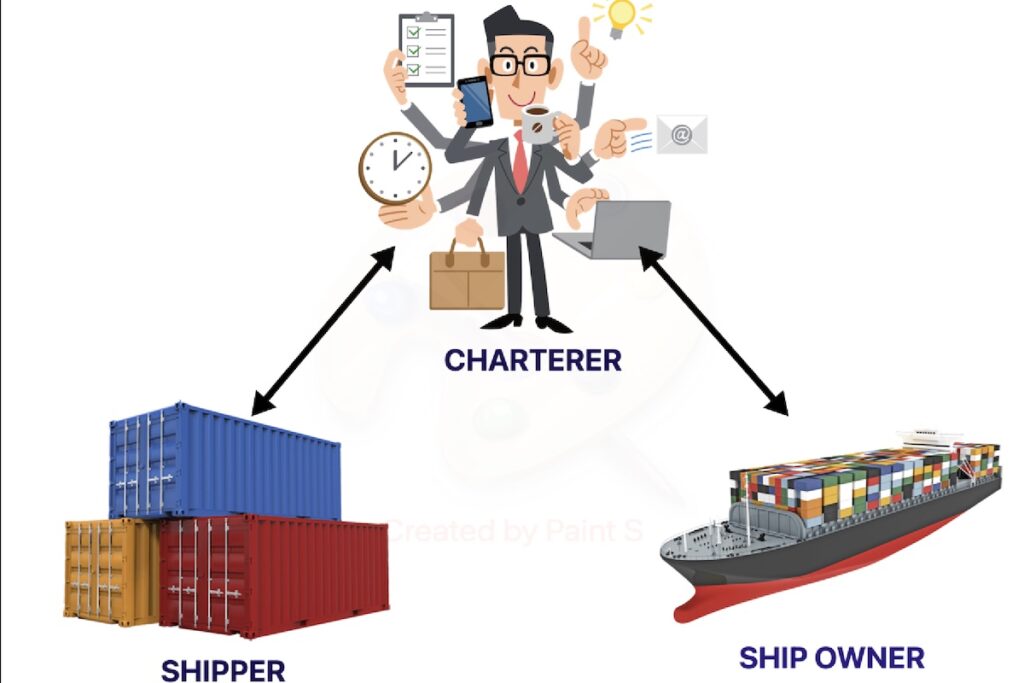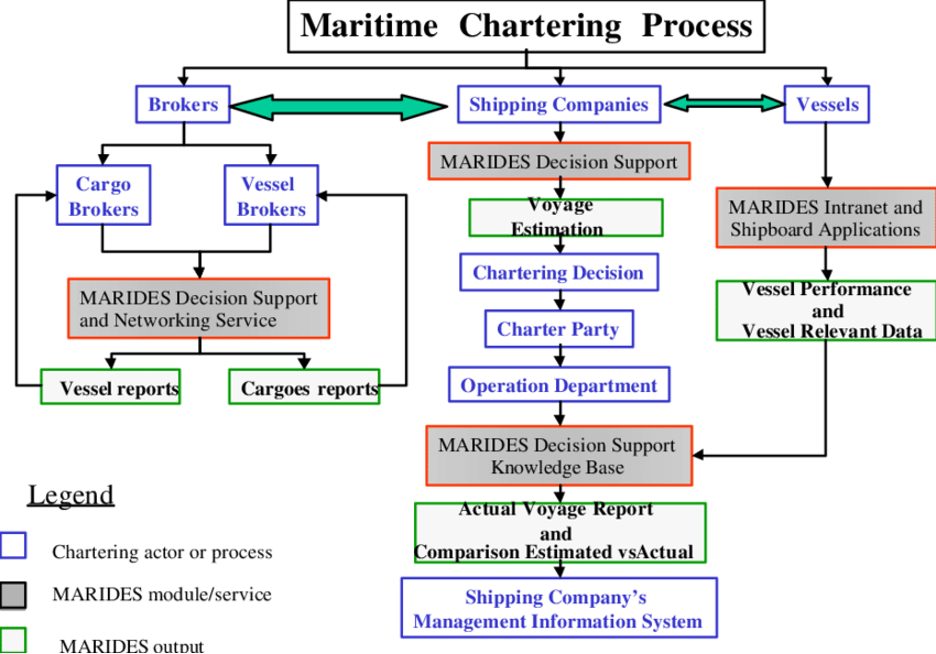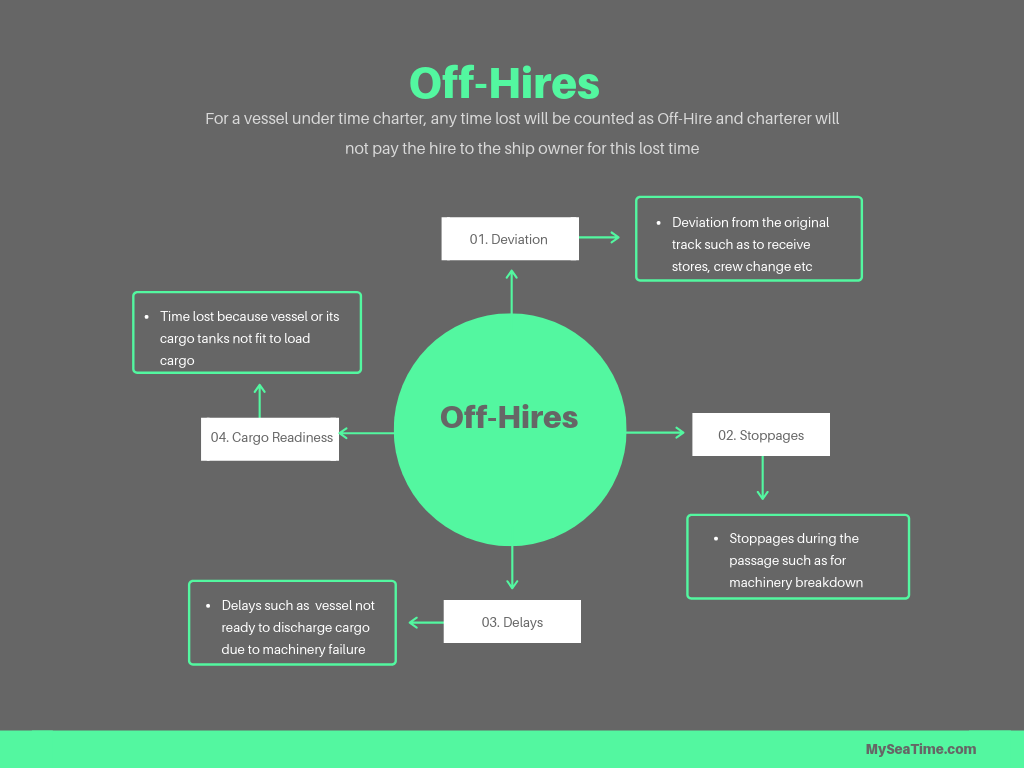The need for organizations to transport goods by sea in a cost-effective manner constitutes the backbone of Global trade. Organizations achieve this objective by either using their own ships or leasing them from others in cases where their own assets do not meet their requirements.
Chartering of a vessel is a maritime term that is used to describe the form of business hiring or renting out a vessel and crew to transport goods or passengers for a fee.
Ship chartering is a popular way for companies to transport goods and materials around the world. It is also used by the military and government for the transport of personnel and equipment.
Ship chartering is a complex process, as there are a number of factors that must be taken into account before a charter is finalized. In this article, we’ll explain the different types of chartering, how ships are chartered, and the different parties involved in chartering.

What is Ship Chartering?
Let’s take a closer look at what is ship chartering. Ship chartering is the process of entering into an agreement where a shipowner agrees to rent out their vessel to a cargo owner to carry freight from one port to another.
The two parties involved in this process are the shipowner, who is the legal entity registered as the owner of the vessel, and the charterer, which is a company that has hired out the ship for transporting their goods. A charter contract outlines all of the conditions, obligations, and details related to how these agreements are established.
Sometimes a charterer may also be a party that does not have cargo but takes a vessel on hire for a predetermined period from a shipowner. This party then trades the ship to carry cargo at a profit that is greater than the hire rate or even makes a profit in a rising market by re-letting the ship out to other charterers.
Sometimes operators employ a ship and then re-employ the vessel for further business chartering. In such a new role they are described as disponent owners or time charter owners. A disponent owner is a party deemed to be the shipowner having control of the vessel by time charter
Chartering activity relies heavily on the services of brokers who may either be hired to locate a ship that will deliver the cargo for a specified fee known as the freight rate – ship brokerage, or brokers who locate cargo for ships- cargo brokerage.
Rates for transporting freight can be calculated based on the number of tons transported along a particular route, or they can be stated as a total amount – typically denominated in United States dollars – each day for the period of the charter that has been agreed upon.
What Are the Different Types of Ship chartering
The process of ship chartering is an important one in the world of maritime transportation. In order to understand ship chartering, it is first important to understand the different types of ship charters that exist.
There are three main types of ship charters: Bareboat, Time, and Voyage. Each type of charter has its own unique benefits and drawbacks that should be considered before entering into an agreement.
The various costs associated with chartering which are as follows are shared amongst the shipowner and charterer according to the type of charter. Ship operating costs. are costs that do not vary with ship use but are essentially incurred in the running of the vessel. They include crew costs, stores, maintenance & repairs, insurance, and administration

Voyage Costs on the other hand are expenses associated with moving the vessel from one port to another. They include port charges, light dues, stevedoring charges, cleaning holds, cargo claims, bunker fuel, and canal fees.
Voyage Charters
Voyage chartering is a contract in which the shipowner agrees to carry a specific cargo on their vessel for a single trip from one or more loading ports to one or more discharge ports. The payment for this service is called freight, and the contract is called a voyage charter party.
Voyage charters are typically between the shipowner or despondent owner and the charterer. The person who charters the ship is known as the voyage charterer, while the person who charters out their ship is known as the shipowner or deponent owner. This form of contract is often selected when the charterer has no experience in operating a ship, or when they only need to transport one consignment of cargo from one place to another.
Under a voyage charter, the master is appointed by the owner, revenue depends on the quantity of cargo and rate, and the shipowner is responsible for both operating and voyage costs. There are different forms of voyage chartering which are: single voyage chartering return voyage chartering, consecutive single-voyage chartering, and consecutive return voyage chartering
A voyage charter indicates a specific vessel, specific cargo, specific port, and specific route. The rights, duties, and responsibilities of ship owners and charterers are determined by the charter party, and the payment by the charterer to the shipowner for the chartered vessel is usually called freight instead of hire. The ship-owner can charter out the whole vessel or part of her space to the charterer. There are provisions made for laytime, demurrage, and dispatch
Time Charters
A time charter is when a ship owner offers a designated manned ship to a charterer to use for a set time period in exchange for a hire fee rather than for a set number of voyages or excursions. The entire or a portion of the ship is hired, and the hire is computed and paid based on the period of the charter and the agreed-upon hiring rate. The delivery and redelivery of the vessel are covered by stipulations.
Loading and unloading fees are often excluded from time charter rates. The duration of the charter could be for a single trip, many months, or even a few years. The time charterer could be a cargo owner who always requires transportation or a shipowner who needs to temporarily expand his fleet but does not want to invest in a ship but wants to be in charge of its commercial operation. A speculator taking a position in anticipation of a shift in the market may be the charterer.
The charterer is responsible for all expenses directly related to using the vessel, such as port fees and bunker costs, and they also cover loading and unloading. In a time charter, the shipowner, who is also in charge of the maintenance and navigational operation of the vessel as well as the management of the cargo, employs the crew.
The costs of the crew’s salary and rations are covered by the shipowner, who is also in charge of the manning of the vessel. In terms of employment and agency, the master is subject to the charterer’s orders and directives.
The ship owner must, upon receiving a complaint from the charterer, make any necessary changes to the appointments of the master and officers if the charterer has good grounds to be unhappy with their performance.

The charterer is in charge of running the ship and is responsible for paying all variable operating expenses like bunkers, port fees, handling fees, tolls on canals, etc.
The shipowner is responsible for paying the fixed operating expenses such as the cost of the ship’s capital, upkeep, supplies, insurance premiums, etc. Time charters are typically used for shorter-term leases and offer more flexibility to the charterer.
Bareboat Charters
The bareboat charter or demise charter is a different kind of charter. According to this agreement, the shipowner is leasing the ship to the charterer. Bareboat chartering typically involves placing a vessel at the charterer’s disposal for an extended length of time without any crew.
Thus, other than paying capital costs, the charterer will assume nearly all of the shipowner’s duties. This implies that the charterer will be financially responsible for the vessel’s maintenance, personnel expenses, insurance, and other charges, in addition to having commercial and technical responsibility for it.
Compared to other contract forms, bareboat chartering is less frequent. When a shipowner or ship operator wants to operate ships or add to his fleet for a while without making the financial obligations of true ownership, but at the same time has to have full control of the chartered vessel, including control over its navigation and management, it may be employed.
Additionally, bareboat chartering is occasionally used in conjunction with the financial plans for the vessel’s installment purchase. The bareboat charter then functions as a hire/purchase agreement, under which the shipowner/seller maintains legal ownership of the vessel and, consequently, security in it, up until the full purchase price is paid.
By employing the master and crew, a time charter differs from a bareboat charter. The master and crew are still the shipowner’s workers when a time charter is in place, but they will be under the time charterer’s control. As a result, the time charterer does not acquire ownership of the ship. With a bareboat charter, the charterer employs the master and crew and therefore assumes ownership of the ship.
What Are the Benefits of Ship Chartering?
There are many benefits that come with chartering a ship. First and foremost, chartering a ship is a great way to save money on transportation costs. Shipping cargo via a charter vessel can be up to 50% cheaper than shipping via a liner vessel.
Another benefit of chartering a ship is that it gives the charterer complete control over the vessel. The charterer gets to choose the route, speed, and port of call for the vessel. This is a great way to ensure that your cargo arrives on time and in good condition.
Finally, chartering a ship is a great way to avoid the hassles and costs associated with owning and operating a vessel. When you charter a ship, you don’t have to worry about things like maintenance, repairs, or crew. This can be a great way to save time and money.
What is a Charter Party?
A Charter Party is the agreement between the party in charge of a ship and a party seeking to use the ship.
A Voyage Charter party contains the names of the parties, the ship’s name and nationality, its deadweight and bale or grain capacity, the description of the goods to be loaded, the port of loading and discharge, lay days, the time for loading and discharge, the payment of freight, demurrage, despatch, and other pertinent information. There are more standard forms of voyage charter party than any other type of agreement.
The most well-known and often used general-purpose voyage charter party worldwide for all types of trades and for many different types of cargoes is the Uniform General Charter, also known by the code name GENCON and here is the latest published version by BIMCO. When these forms are used, multiple additional clauses usually referred to as rider clauses will be attached to address situations that the written provisions do not address.
There are several time forms for usage in the time chartering industry, although significantly less than the extensive selection offered for voyage chartering. The NYPE (New York Produce Exchange (NYPE 93) (amended 2001) and BALTIME (Baltic and International Marine Council (BALTIME 1939) are the two main types used for time charters. The NYPE Charter Party forms the basis for the vast majority of time charters.
There is just one widely used standard form for bareboat charter parties, and that is the BARECON form created by BIMCO. There are several clauses in this form that are frequently seen in time charter parties, as can be seen by closely examining it.
Particularly, if included in a time charter party, the provisions pertaining to delivery, canceling, trading limitations, surveys, inspections, hire, redelivery, general average, war, commission, and law and arbitration would be similarly effective.
Charter abbreviations
ATDNSHINC = Any Time Day or Night Sundays and Holidays Included
ATUTC = Actual Times Used to Count
FHEX = Fridays/Holidays Excluded
FHINC = Fridays/Holidays Included
FILO = Free In/Liner Out. Seafreight with which the shipper pays load costs and the = carrier pays for discharge costs.
FIO = Free In/Out. Freight booked FIO includes the sea freight, but no loading/discharging costs, i.e. the charterer pays for the cost of loading and discharging cargo.
FORCE MAJEURE = Clause limiting responsibilities of the charterers, shippers, and receivers due to events beyond their control.
SSHEX (or SATSHEX) = Saturdays, Sundays, Holidays Excluded
SSHINC = Saturdays, Sundays, Holidays Included (or SATSHINC)
WPD = Weather Permitting Day
WWD = Weather Working Day
Conclusion
Ship chartering is a great way to save money on transportation costs and avoid the hassles and costs of owning and operating a vessel. There are three main types of ship charter: Bareboat, Time, and Voyage.
Each type of charter has its own unique benefits and drawbacks. When chartering a ship, it’s important to understand the terms of the contract and to have the financial resources in place to make the initial payment and cover the costs of operating the vessel
- Types of Gas Carriers as per IGC Code – April 22, 2025
- Wind-Assisted Propulsion Systems (WAPS): A Game Changer for Maritime Decarbonization – February 6, 2025
- 10 Boat Salvage Yards in California – January 25, 2025




